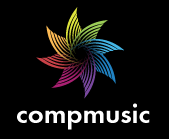Tutorial on Computational Methods For Supporting Corpus-Based Research On Indian Art Music
This Tutorial is a community-driven initiative involving many researchers and it is offered at the 23rd International Society for Music Information Retrieval Conference in Bengaluru, India, on the morning of December 4th, 2022.
Lecturers:
Thomas Nuttall, Genís Plaja-Roglans, Lara Pearson, Brindha Manickavasakan, Kaustuv Kanti Ganguli and Ajay Srinivasamurthy.
Abstract:
Culture-aware approaches to computational musicology and music information research (MIR) have been shown to be effective for a musically relevant analysis of a music culture. Projects such as CompMusic (2011-2017), MusicalBridges (2018-2022) or the initiatives funded by SPARC (2019-2022) have demonstrated the importance of considering sociocultural specifics of a music tradition to effectively define research problems, collect data and propose methods for analysis. These projects have made particularly notable contributions to the analysis of Indian Art Music (IAM), leading to a collective body of bespoke computational methods for analyzing these traditions.
Through this tutorial we aim to compile and present such works, making openly available a number of software tools and materials developed by MIR researchers working on the two main IAM traditions, Carnatic and Hindustani. The content will be organized into five sections: (1) datasets and corpora, (2) melodic analysis, (3) rhythmic analysis, (4) timbral analysis and (5) structural analysis. Each topic will include an introduction covering the basic musical concepts required to understand its constituent tasks, followed by a practical presentation of the materials and software tools compiled.
This tutorial is the result of an ongoing collaborative effort involving many contributors. The software will be available in Python through a single Github repository, containing clear and reproducible implementations of the presented methodologies. A Jupyter WebBook will be the main tutorial reference, in which we will introduce all the materials, contextualize the software tools, and include Jupyter Notebook examples for most of the research tasks covered.
Program:
This tutorial is organized into three main sections, of 50 minutes each (+10 minutes break and questions).
- Section 1: Musicological introduction: concepts and challenges (Lara, Brindha, Kaustuv, and Ajay)
- Section 2: compIAM and the available tools for the computational research of IAM (Thomas and Genís)
- Section 3: Entire research pipeline for a relevant research problem for IAM (Thomas and Genís)
Resources:
- Tutorial webbook
- compIAM: (computational analysis of Indian Art Music)


